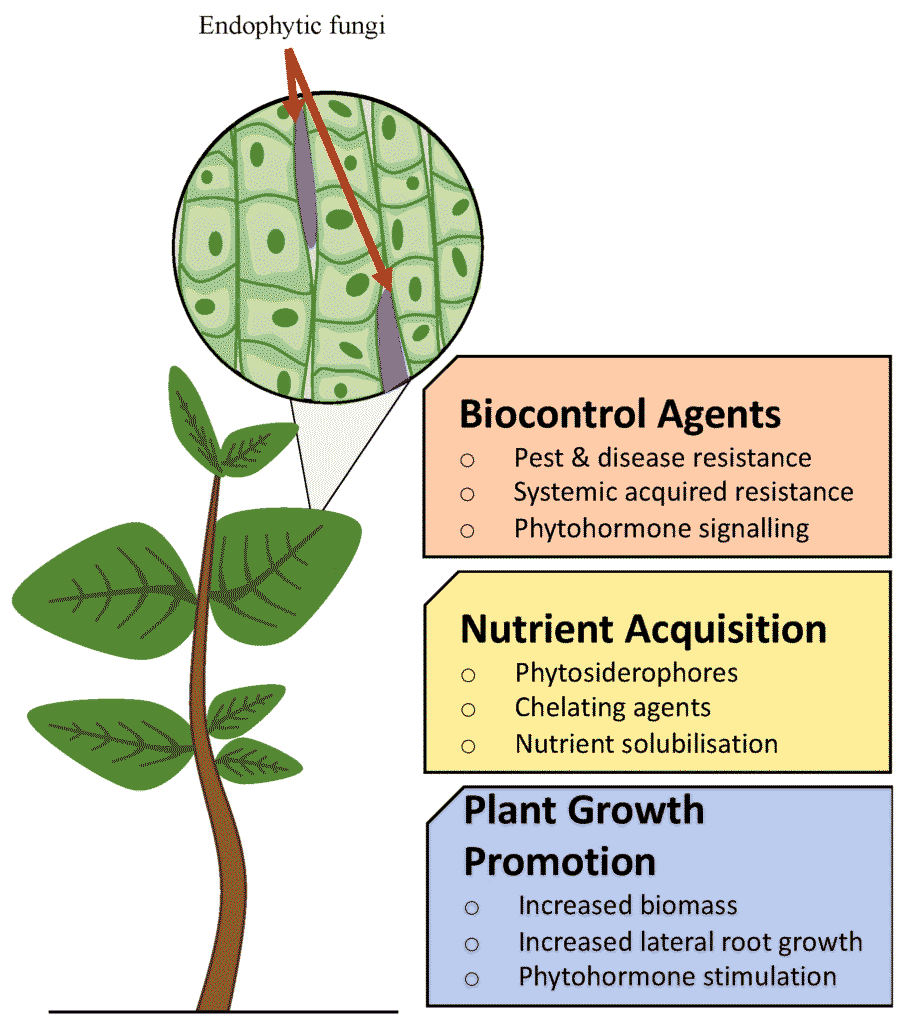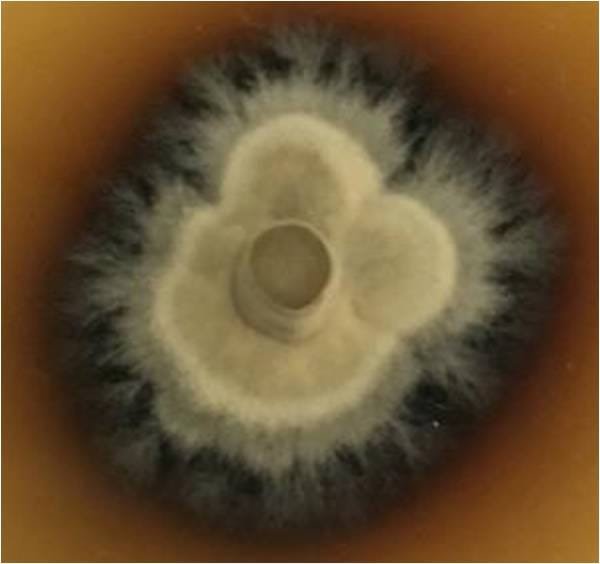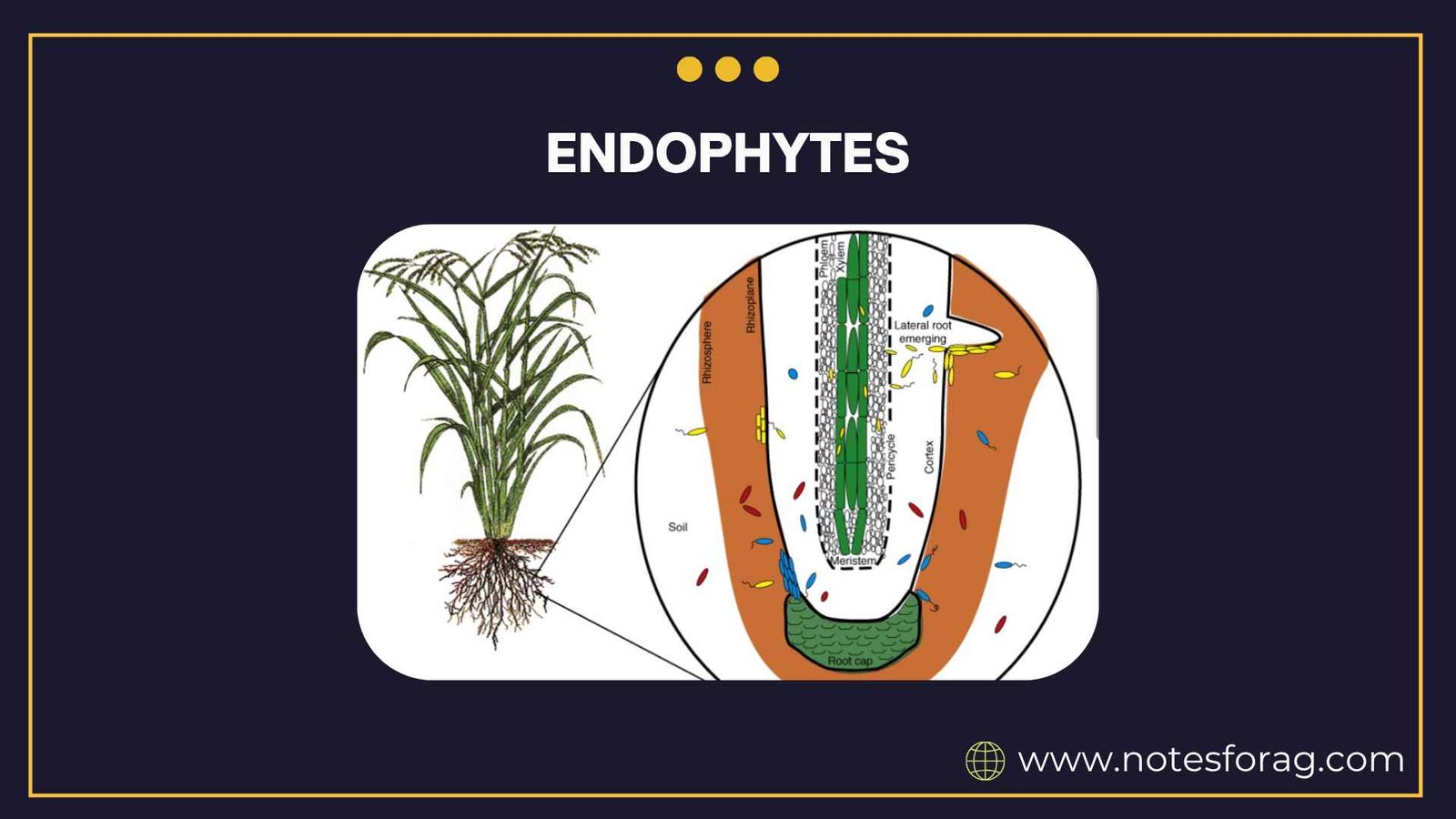Introduction
Endophytes are microorganisms, mainly bacteria and fungi, that reside within the tissues of plants without causing any immediate, overt negative effects. These microorganisms form a symbiotic relationship with the host plant, providing numerous benefits such as improved growth, resistance to pests and diseases, and tolerance to abiotic stresses. In recent years, They have gained attention in agriculture, biotechnology, and environmental science due to their potential to promote sustainable and eco-friendly practices.

Definition
They are defined as microorganisms, particularly fungi or bacteria, that colonize the internal tissues of plants for at least a part of their life cycle without causing disease. These organisms can inhabit roots, stems, leaves, flowers, or seeds of various plant species. Their interaction with the host plant can range from mutualistic to commensalistic and sometimes even latent pathogenic under stress conditions.
Summary of Endophytes
- Endophytes are beneficial fungi and bacteria living inside plant tissues that enhance nutrient uptake, stress tolerance, pathogen resistance, and overall plant health through symbiotic relationships.
- They act as natural biostimulants, increasing growth by producing phytohormones and improving root structure, while also offering biocontrol through antibiotics and competition with pathogens .
- Endophytes present sustainable agricultural solutions, serving as biofertilizers, biopesticides, and agents for stress resilience and eco-friendly crop enhancement.
Table of Contents
Types of Endophytes
1. Fungal Endophyte

They are the most commonly studied group of endophytes. They are classified into two broad categories:
a. Clavicipitaceous Endophyte
These are primarily associated with grasses and are vertically transmitted (from parent to offspring). They can produce alkaloids that protect the host plant from herbivores and pathogens.
b. Non-Clavicipitaceous Endophyte
These are found in a wide variety of plants and are mostly horizontally transmitted (from the environment). They play a crucial role in plant stress tolerance and nutrient acquisition.
2. Bacterial Endophyte

Bacterial endophyte inhabit various plant tissues and promote growth by producing phytohormones, solubilizing nutrients, fixing nitrogen, or inducing systemic resistance against pathogens.
Colonization and Transmission
1. Modes of Entry
Endophyte enter plant tissues through natural openings such as stomata, wounds, root hairs, or by direct penetration. They then colonize the intercellular or intracellular spaces without triggering strong defense responses from the plant.
2. Transmission
Endophyte can be transmitted vertically (from parent to progeny via seeds or vegetative propagation) or horizontally (from the surrounding environment such as soil, water, or air).
Functions and Benefits
1. Plant Growth Promotion
Endophyte produce growth-promoting substances like auxins, gibberellins, and cytokinins. They also facilitate the uptake of nutrients like nitrogen, phosphorus, and potassium.
2. Stress Tolerance
Endophyte help plants tolerate abiotic stresses such as drought, salinity, and heavy metal toxicity by producing stress-related enzymes and antioxidants.
3. Disease Resistance
Endophyte can enhance the plant’s immune system or outcompete pathogens through the production of antibiotics, siderophores, and hydrolytic enzymes.
4. Biocontrol Agents
Many endophyte act as biological control agents against pests and pathogens, reducing the need for chemical pesticides.
5. Phytoremediation
Endophyte can assist plants in cleaning up environmental pollutants by degrading toxic compounds or enhancing the plant’s capacity to accumulate and detoxify pollutants.
6. Secondary Metabolite Production
Endophyte produce bioactive compounds with antimicrobial, antiviral, anticancer, and antioxidant properties, making them valuable in pharmaceuticals and agriculture.
Applications in Agriculture
1. Biofertilizers
Endophytic bacteria and fungi can be used as biofertilizers to improve soil fertility and crop yields by enhancing nutrient availability and uptake.
2. Biopesticides
Endophyte that produce anti-pathogenic compounds can serve as natural pesticides, reducing reliance on synthetic chemicals.
3. Drought and Salinity Resistance
Endophyte that confer stress tolerance can be used to develop crop varieties suitable for adverse climatic conditions.
4. Seed Inoculation
Inoculating seeds with beneficial endophyte before planting can ensure early colonization and long-term plant benefits.
Applications in Industry and Environment
1. Pharmaceutical Industry
Endophytes are being explored as a source of novel antibiotics, anticancer drugs, and immunosuppressants due to their ability to synthesize unique secondary metabolites.
2. Environmental Remediation
Endophyte-assisted phytoremediation offers an eco-friendly approach to detoxify soils and water contaminated with heavy metals, hydrocarbons, and pesticides.
3. Biotechnology
Endophytes serve as model systems for studying plant-microbe interactions and can be genetically engineered to improve their functions or deliver desired traits to host plants.
Challenges and Limitations
1. Identification and Characterization
Many endophytes remain unidentified due to limitations in culturing techniques. Molecular tools are needed to better understand their diversity and functions.
2. Host Specificity
The beneficial effects of endophytes can vary with plant species, making it challenging to generalize findings across crops.
3. Consistency in Performance
Field performance of endophytes is often inconsistent due to variations in environmental conditions, soil type, and microbial interactions.
4. Biosafety and Regulation
Widespread use of endophytes in agriculture and biotechnology raises concerns about biosafety, ecological impact, and the need for regulatory guidelines.
Future Prospects
1. Research and Development
Advancements in genomics, metagenomics, and synthetic biology will enable better understanding and manipulation of endophytes for various applications.
2. Commercialization
Developing effective formulations and delivery systems for endophyte-based products can enhance their commercial viability and farmer adoption.
3. Integration with Sustainable Agriculture
Endophytes can play a key role in reducing chemical inputs, enhancing crop resilience, and promoting environmentally sustainable farming practices.
Conclusion
Endophytes represent a hidden yet powerful component of plant ecosystems. Their ability to promote growth, protect against stresses, and produce valuable bioactive compounds makes them a promising tool in agriculture, biotechnology, and environmental conservation. Continued research, technological innovation, and sustainable practices can unlock the full potential of endophytes for the benefit of both nature and society.
Frequently Asked Questions (FAQs)
What are endophytes and why are they important for crops?
Endophytes are tiny bacteria or fungi that live inside plants, especially in leaves, stems, and roots, without causing harm. They form a friendly relationship with the plant, where both benefit. Endophytes help plants absorb more nutrients, grow faster, and stay healthier by fighting off pests and diseases. Farmers and gardeners value endophytes because they make crops stronger without needing too many chemicals.
How do endophytes help plants resist pests and diseases?
Endophytes help protect plants in many ways. They produce natural chemicals that kill or stop harmful bacteria, fungi, and insects. They also compete with disease-causing organisms, not letting them settle in the plant. Some endophytes boost the plant’s immune system, making it harder for pests and diseases to attack. This means plants can stay healthy naturally, reducing the need for pesticides.
Can endophytes improve drought and salinity tolerance?
Yes, Endophytes are known to help plants survive in tough conditions like drought (lack of water) or salty soil. They do this by helping roots grow better and deeper, producing special chemicals that reduce stress, and improving the plant’s water-holding ability. Because of endophytes, plants can stay green and keep growing even when water is low or the soil isn’t perfect.
Related Articles

